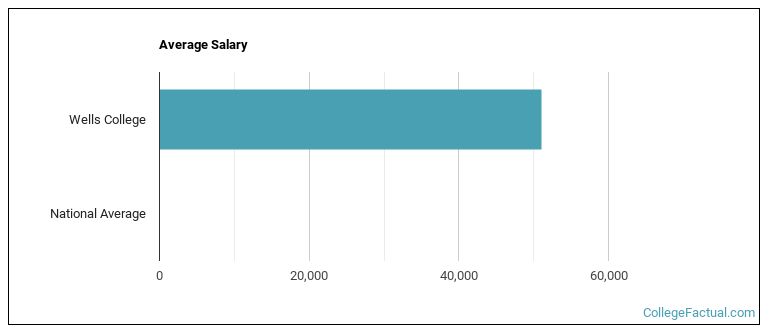 by our College Data Analytics Team
by our College Data Analytics TeamExplore the best ranked schools for the programs you are most interested in.
Wells was not ranked in College Factual's 2025 Best Overall Colleges report. This could be for a number of reasons, including lack of data.
Because it has a high acceptance rate of 88%, some consider Wells to be a safety school. But don't just assume that admittance is in the bag. Make sure to spend enough time on your application so that it is in tip-top shape.
The student to faculty ratio at Wells is an impressive 8 to 1. That's quite good when you compare it to the national average of 15 to 1. This is a good sign that students at the school will have more opportunities for one-on-one interactions with their professors.
In addition to the student to faculty ratio, some people look at what percentage of faculty members are full-time as a sign of how much time professors will be able to spend with their students. This is because part-time teachers may not be be on campus as much as their full-time counterparts.
The full-time faculty percentage at Wells College is 67%. This is higher than the national average of 47%.
The freshmen retention rate is a measure of what percentage of first-year, full-time students come back for their sophomore year. The 46% rate at Wells College is a good bit lower than the national rate of 68%. This could be for a number of reasons, such as students transferring after a year because they changed majors.
Students are considered to have graduated on time if they finish their studies within four years. At Wells the on-time graduation rate of first-time, full-time students is 54%. That is great when compared to the national average of 33.3%
Find out more about the retention and graduation rates at Wells College.
During the 2017-2018 academic year, there were 357 undergraduates at Wells with 351 being full-time and 6 being part-time.
| $0-30 K | $30K-48K | $48-75 | $75-110K | $110K + |
|---|---|---|---|---|
| $17,372 | $18,949 | $20,472 | $25,732 | $28,134 |
The net price is calculated by adding tuition, room, board and other costs and subtracting financial aid.Note that the net price is typically less than the published for a school. For more information on the sticker price of Wells, see our tuition and fees and room and board pages.
Almost 66% of college students who graduated with the class of 2018 took out student loans, but that percentage varies from school to school. At Wells, approximately 86% of students took out student loans averaging $7,762 a year. That adds up to $31,048 over four years for those students.

Get more details about the location of Wells College.

Contact details for Wells are given below.
| Contact Details | |
|---|---|
| Address: | 170 Main Street, Aurora, NY 13026-0500 |
| Phone: | 315-364-3264 |
| Website: | www.wells.edu/ |
| Most Popular Majors | Bachelor’s Degrees | Average Salary of Graduates |
|---|---|---|
| General Biology | 17 | $35,728 |
| Business Administration & Management | 9 | $41,360 |
| Writing Studies | 4 | NA |
| General Psychology | 4 | $35,578 |
| Biochemistry, Biophysics & Molecular Biology | 3 | NA |
| Computer Science | 2 | NA |
| History | 2 | NA |
| Mathematics | 2 | NA |
| Natural Resources Conservation | 2 | NA |
| Criminology | 2 | NA |
Online learning options are becoming more and more popular at American colleges and universities. Online classes are great for students who have busy schedules or for those who just want to study on their own time.
In 2022-2023, 14 students took at least one online class at Wells College. This is an increase from the 0 students who took online classes the previous year.
| Year | Took at Least One Online Class | Took All Classes Online |
|---|---|---|
| 2022-2023 | 14 | 0 |
| 2021-2022 | 0 | 0 |
| 2020-2021 | 0 | 0 |
| 2018-2019 | 0 | 0 |
If you’re considering Wells College, here are some more schools you may be interested in knowing more about.
Curious on how these schools stack up against Wells? Pit them head to head with College Combat, our free interactive tool that lets you compare college on the features that matter most to you!
Footnotes
*The racial-ethnic minorities count is calculated by taking the total number of students and subtracting white students, international students, and students whose race/ethnicity was unknown. This number is then divided by the total number of students at the school to obtain the racial-ethnic minorities percentage.
References
More about our data sources and methodologies.